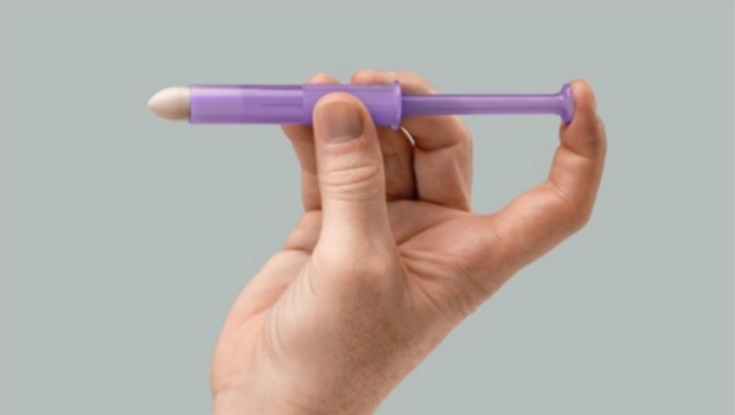On average, 78% of women worldwide have had an episode of vaginal candidiasis at least once in their lives, according to scientific studies. In about half of these cases vaginal candidiasis becomes a recurrent process, which is associated with the appointment of ineffective therapy & nbsp; or refusal of treatment by the patient.
In aspects of the treatment of vaginal candidiasis, due to its relevance, it is necessary for gynecologists, dermatologists, and primary care physicians to be oriented. Read about the modern principles of treatment of vaginal candidiasis on estet-portal.com in this article.
What you need to know about the etiology of vaginal candidiasis and the factors that provoke its development
In the etiology of vaginal candidiasis, the main place belongs to the diploid fungi of the species Candida albicans.
Candida fungi are opportunistic aerobic microorganisms and normally live on mucous membranes in moderate numbers. They form long cellular filaments called pseudomycelium, as well as blastospores and zlamidospores.
The action of such provoking factors as stress, malnutrition, antibiotics, the use of inappropriate intimate hygiene products leads to general immunosuppression, local disruption of microbiocenosis and, as a result, & nbsp; the growth of fungal colonies in pathologically large quantities from the moment of manifestation of vaginal candidiasis. Read more about the factors in the development of vaginal candidiasis in the article: Vaginal candidiasis – a disease of reduced immunity.
In the treatment of candidiasis, it is important to consider: What are the types of antimycotic therapy for vaginal candidiasis, and when are they indicated;
• What formulations of antifungals are used for topical treatment of vaginal candidiasis;
• What substances are the most effective in the local treatment of vaginal candidiasis;
• What you need to know about current principles of systemic antifungal use;
• Things to keep in mind when planning a treatment regimen for vaginal candidiasis.
Read us on Telegram. What you need to know about current principles of systemic antifungal use;
•
Things to keep in mind when planning a treatment regimen for vaginal candidiasis.Read us on Telegram.
What you need to know about current principles of systemic antifungal use; •
Things to keep in mind when planning a treatment regimen for vaginal candidiasis.
Telegram
.What are the types of antimycotic therapy for vaginal candidiasis, and when are they indicated
There are the following types of antimycotic therapy:
1. Topical Therapy
– the use of antifungal agents in the form of vaginal suppositories, tablets, ointments, creams. In most cases of this disease, the correct use of local antifungal agents contributes to the complete disappearance of all signs of the disease.2.  s. Chronic vaginal candidiasis with recurrent course.
s. Chronic vaginal candidiasis with recurrent course.
What formulations of antifungals are used for topical treatment of vaginal candidiasis For
topical treatmentof vaginal candidiasis, the following dosage forms are used: 1.
Vaginal suppositories– are made on the basis of paraffin and contain a clear amount of active ingredient. When introduced per vagina, they do not cause pain and quickly melt under the influence of the temperature of the vagina. It is recommended to use candles at night. Their use in the daytime is limited due to the formation of products of melting of the suppository shells, which may be accompanied by some discomfort;
 2.
2.
3.
Cream for external use – contains a large amount of alcohol, has the property of "drying"; places of application, quickly absorbed when applied; 4. Ointment for external use
–contains a large amount of fat and is applied in a thin layer on dry lesions, it is absorbed much longer than the cream.
Which substances are the most effective in topical treatment of vaginal candidiasis According to numerous studies, the most effective antifungal agents in topical
treatment
 – substance of the group of polyene antibiotics. The mechanism of action is similar to that of clotrimazole; vaginal suppositories must be used every evening once for three days. The cream is applied up to four times a day for two weeks;
– substance of the group of polyene antibiotics. The mechanism of action is similar to that of clotrimazole; vaginal suppositories must be used every evening once for three days. The cream is applied up to four times a day for two weeks;
3. Ketoconazole
– derivative of imidazoledioxolane, has a mechanism of action similar to clotrimazole;4. Neomycin – aminoside antibiotic. It is characterized by fungicidal action due to the ability to block the ribosomes of
microorganisms. It is part of complex antifungal agents, presented in vaginal capsules.
What you need to know about current principles of systemic antifungal use
Depending on the purpose of prescribing systemic antifungal treatment, there are several therapeutic regimens. If it is necessary to stop the recurrence of chronic vaginal candidiasis, the most appropriate is the appointment of
fluconazoleor
itraconazole. The therapy should consist of two courses: eradication – duration of 3-7 days, and maintenance - 4-6 months. According to some authors, the most effective treatment regimen for chronic genital candidiasis is to use
fluconazole50 mg once a day for 2 weeks to eradicate the pathogen, after which a course of prophylactic therapy with fluconazole 150 mg is performed 1 once a week for another 4 months. At the same time, the simultaneous use of antifungal agents, both locally and systemically, is the basis of a highly effective combination therapy for vaginal candidiasis.
Things to keep in mind when designing a treatment regimen for vaginal candidiasis The variety of modern antifungal drugs gives the doctor the opportunity to draw up individual tactics treatment of vaginal candidiasis in women with this pathological condition, and obliges him to be oriented in modern treatment regimens for this disease in accordance with the latest recommendations. Despite the tendency of vaginal candidiasis to chronicity of the pathological process and recurrent course, & nbsp; a properly designed antifungal therapy regimen almost always has a successful result. When determining the tactics of treating vaginal candidiasis, an important point is to establish compliance with the patient. It must be explained that the basis for the successful treatment of fungal infections is strict adherence to the therapy regimen, while skipping medications or premature interruption of the therapeutic course almost always leads to a relapse of vaginal candidiasis, but more resistant to treatment. The patient's understanding of the need for a full-fledged one is its integral part and the key to successful treatment, which must be remembered and taken into account by every doctor. Thank you for staying with estet-portal.com. Read other interesting articles on the site in the "Gynecology" section. You may also be interested in: What are the basic principles of candidiasis treatment






Add a comment